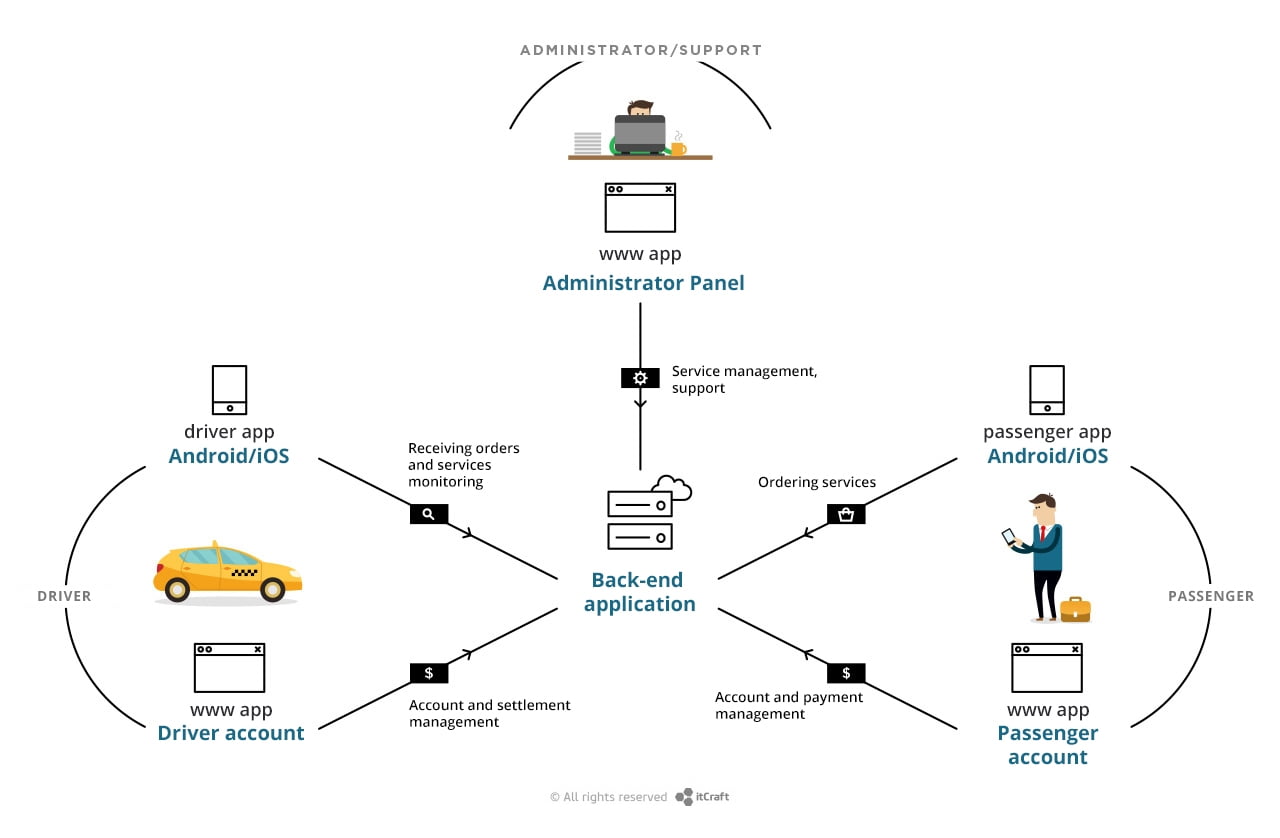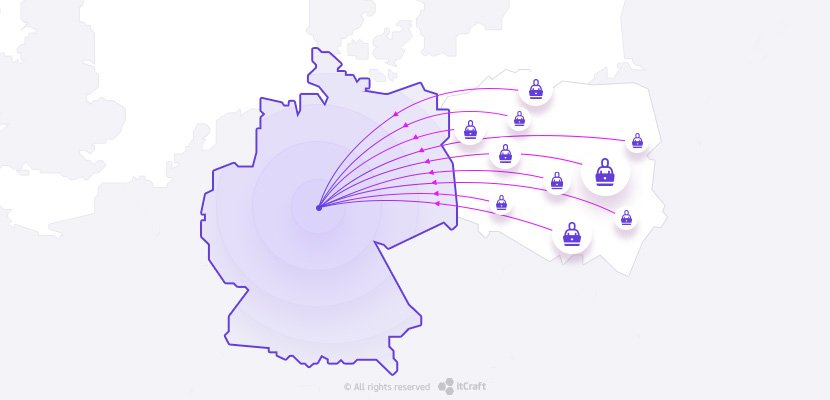Understanding the Importance of Cybersecurity in Fintech Applications
1. Introduction to the Importance of Cybersecurity in Fintech Applications
As the world moves towards digitalization, Fintech applications have become integral in the financial sector. These applications store sensitive data, making them prime targets for cyberattacks. Therefore, the importance of cybersecurity in Fintech cannot be overstated. This introductory section will shed light on why robust cybersecurity measures are essential for Fintech applications. It will delve into the ramifications of security breaches and present a compelling case for prioritizing cybersecurity in the Fintech sector. Stay tuned to understand the symbiotic relationship between Fintech innovations and cybersecurity.
1.1 Definition of Cybersecurity and Fintech Applications
Cybersecurity is a set of techniques and procedures that ensure the protection of an internet-connected system, including hardware, software, and data, from cyber threats. It prevents unauthorized access, use, disclosure, disruption, modification, or destruction of information. In essence, cybersecurity aims to ensure the confidentiality, integrity, and availability of data, thus safeguarding information and the systems that process it from any form of a digital attack.
On the other hand, Fintech, an abbreviation of Financial Technology, refers to software and other modern technologies used by businesses in the provision of automated and improved financial services. Fintech applications are increasingly becoming popular for conducting financial transactions, trading securities, managing assets, and providing insurance services. These technological innovations have made financial operations more efficient. However, as they become more sophisticated, they also become more susceptible to cybersecurity threats. Thus, there is an increasing need for robust cybersecurity measures to ensure the security and integrity of these fintech applications.
1.2 Importance of Cybersecurity in Fintech Sector
The importance of cybersecurity in the fintech sector cannot be overstated. As technology continues to evolve rapidly, so does the sophistication of cyber threats. Fintech companies, which operate at the intersection of technology and finance, are attractive targets for cybercriminals due to their valuable financial and personal data.
In addition to the potential monetary loss, data breaches can also have severe reputational damage. Trust plays a critical role in the customer relationship, especially in the finance sector. A breach can erode customer trust and result in lost business. Furthermore, regulatory bodies can impose hefty fines on fintech for failing to adequately protect customer data.
A robust cybersecurity system is not just about risk mitigation but can also serve as a competitive differentiator. Customers are more likely to choose a fintech company they perceive to be secure. Therefore, investing in cybersecurity is not just a cost of doing business, but a strategic decision that can increase market share and customer loyalty.
2. Understand the Cyber Threats in Fintech
In fintech, understanding potential cyber threats is paramount. Sophisticated cybercriminals target fintech apps due to the wealth of sensitive financial data they hold. Threats include data breaches, phishing attacks, ransomware, and API vulnerabilities. However, threats constantly evolve, with AI-powered attacks being the latest concern. In order to secure fintech platforms, an in-depth understanding of these threats is required, along with robust security measures, regular vulnerability assessments, and a proactive approach to adopting emerging cybersecurity technologies.
2.1 Cyber Attacks in Financial Sector
Cyberattacks in the financial sector are becoming increasingly common with the advent of new technologies and digital transformation. The financial sector is a prime target for cyber threats due to the sensitive nature of the information it holds – transaction records, personal data, and financial assets. Moreover, the interconnectivity of global financial systems makes it even more susceptible to cyber threats.
There are several types of cyberattacks that financial institutions must guard against. These include phishing attacks that trick users into revealing sensitive information, ransomware attacks that hold data hostage until a ransom is paid, and Denial-of-Service (DoS) attacks that overwhelm systems and disrupt services. Additionally, attackers often exploit vulnerabilities in fintech applications to gain unauthorized access to systems and data. As a result, cybersecurity is not merely an option but a necessity in the financial sector. It’s imperative to constantly monitor and improve security measures to protect against these continual threats.
2.2 Fintech Data Breaches and Protecting Customer Data
2.2 Fintech Data Breaches and Protecting Customer Data
Data breaches have become increasingly common in the fintech industry due to the vast amount of sensitive information these firms handle. A data breach can lead to not only financial loss but also severe damage to a company’s reputation. In the digital age, customer trust is paramount, and any compromise of customer data can be disastrous.
Cybersecurity measures are crucial for fintech companies to protect customer data. Comprehensive security protocols, including data encryption and secure user authentication, should be in place to prevent unauthorized access. Fintech firms should also implement regular system audits to identify and fix potential security vulnerabilities. Continual employee training on new cyber threats is equally necessary to ensure all staff comprehend the importance of data security.
In the event of a data breach, fintech firms must act swiftly and transparently to mitigate damage. This might involve alerting affected customers, working with cybersecurity experts to address the breach, and cooperating with regulatory bodies. Robust data protection is not merely about thwarting attacks but also about ensuring a quick and effective response when breaches occur.
2.3 Cybersecurity Challenges in Fintech
The realm of fintech is not immune to cybersecurity challenges. As financial institutions continue to adopt digital platforms to provide seamless services to their customers, they simultaneously open up a pandora box of cybersecurity threats.
Two significant challenges facing fintech are data breaches and identity theft. Data breaches are becoming more common, and they can have devastating effects on a fintech firm’s reputation and bottom line. Cybercriminals can exploit vulnerabilities within a fintech application, gaining unauthorized access to sensitive customer data such as credit card numbers, addresses, and personal identification numbers.
Furthermore, identity theft is an ever-looming threat. Fintech applications often require customers to input personal data to use their services. This information, if not adequately protected, can be stolen and used to commit fraud. This not only affects the customer but can also lead to significant financial losses for the fintech company.
Overcoming these cybersecurity challenges requires robust security systems, continuous monitoring for potential threats, and stringent data privacy measures to safeguard sensitive customer information.
3. Security Measures for Fintech
Fintech applications should employ robust security measures to prevent cyber-attacks. These measures include end-to-end encryption to secure data transmission, two-factor authentication for user access, and regular security audits to identify vulnerabilities. AI and machine learning can also be used to detect unusual activities and respond to them in real-time. Lastly, user education is crucial to avoid phishing scams and other user-targeted threats. By ensuring these measures are in place, fintechs can provide a safe and secure platform for their users.
3.1 Security Infrastructure for Fintech
Fintech applications require a robust, reliable, and highly secure infrastructure to successfully protect financial data. Security infrastructure in fintech applications is predicated not only on protecting sensitive customer data but also on ensuring uninterrupted service, maintaining user trust, and complying with regulatory requirements.
The key components of a secure infrastructure for fintech applications include firewalls, intrusion detection systems, data encryption, multifactor authentication, network security, and regularly updated antivirus software. These measures aid in combating breaches, phishing attacks, data theft, and DDoS attacks.
Moreover, adopting a zero-trust network architecture is another step towards building a solid security infrastructure. It emphasizes the principle of ‘never trust, always verify’. This means that before granting access, every request is thoroughly verified, irrespective of where it originates from – inside or outside the network.
Ultimately, building a secure fintech infrastructure is about employing a comprehensive, layered approach, combining several defensive mechanisms to protect against the ever-evolving threat landscape. Robust security infrastructure is the cornerstone of any successful fintech application, ensuring customer trust while facilitating growth and innovation in the financial sector.
3.2 Encryption and Two-factor Authentication in Fintech
Encryption is a fundamental cybersecurity measure within fintech applications. It translates data into a code that can only be accessed with a key. For financial services, encryption is crucial because it adds an additional layer of security to sensitive data like credit card numbers, bank account details, and personal identification information. If a cyber attack is successful, the encrypted data is useless without the decryption key, offering a robust safeguard against data breaches.
On the other hand, two-factor authentication (2FA) adds another hoop for potential cybercriminals to jump through. 2FA requires a two-step verification process instead of the antiquated username-password combo. In most fintech applications, upon entering the username and password, users are required to confirm their identity through a second device, typically a mobile phone, via a code or notification.
The combination of encryption and two-factor authentication significantly reduces the risk of data breaches, hacking, and identity theft. It provides a robust model for data protection while ensuring the smooth operation of fintech services. In a world where cyber attacks are steadily increasing, these features have made their way into the quintessential standards in fintech cybersecurity.
3.3 Secure Coding in Fintech
Secure coding is a critical aspect in Fintech, given the sensitive nature of the data and transactions handled in this industry. Normally, it involves a set of techniques and procedures to prevent the introduction of security vulnerabilities during the coding phase. It’s not just about writing codes, it’s about writing codes that are impervious to attacks.
In the world of Fintech, secure coding plays an even greater role. It forms the foundation on which robust, reliable, and secure financial applications are built. Whether it’s a mobile banking app, a digital payment platform or an investment system, the need for secure coding cannot be overstated. It helps protect the system from common attacks such as SQL Injection, Cross-Site Request Forgery (CSRF), Cross-Site Scripting (XSS), among others.
Structuring the code in the right way makes it harder for hackers to find loopholes, minimizes the system’s propensity towards bugs and reduces the potential impact of any security breach. Therefore, understanding and implementing secure coding is a non-negotiable requirement for any Fintech application. It protects the financial assets and personal data of millions of users around the world, so it is absolutely critical in maintaining trust in digital finance.
4. Compliance, Risk Management, and Response in Fintech Cybersecurity
Compliance, risk management, and response are pivotal in Fintech cybersecurity. Regulatory compliance ensures adherence to standards, reducing threats. Risk management involves identifying vulnerabilities, assessing potential impact, and implementing mitigation strategies. It’s a proactive approach to prevent breaches. In contrast, responding to incidents quickly, accurately, and efficiently minimizes damage and recovery time. Therefore, combining these three elements creates a robust cybersecurity framework in the Fintech realm, safeguarding sensitive data and maintaining customer trust.
4.1 Cybersecurity Compliance for Fintech and Cybersecurity Laws
4.1 Cybersecurity Compliance for Fintech
In the rapidly evolving fintech landscape, cybersecurity compliance is crucial. As fintech companies handle sensitive financial data, they are a common target for cyberattacks, making them susceptible to potential breaches and loss of consumer trust. Compliance with cybersecurity measures ensures these firms can safeguard their systems, data, and customer information from potential threats. It encompasses adopting advanced security infrastructure, implementing security policies, and regularly updating frameworks in line with industry best practices and standards. Moreover, compliance is not a one-time event but an ongoing process requiring periodic assessments and upgrades in response to new threats and advances in technology.
Cybersecurity Laws
Cybersecurity laws play a vital role in defining the obligations and responsibilities of fintech companies in ensuring data security. Such laws aim to create a legal framework that protects users’ data, mitigate cyber risks, and outlines the repercussions in case of a breach. They set the standard for what is acceptable in terms of data handling and storage, while also outlining potential penalties for non-compliance. Consequently, fintech companies must familiarise themselves with various cybersecurity laws such as General Data Protection Regulation (GDPR), the California Consumer Privacy Act (CCPA), and the NY Department of Financial Services Cybersecurity Regulation to ensure compliance and avoid costly legal ramifications.
4.2 Risk Management in Fintech
4.2 Risk Management in Fintech
Risk management holds paramount importance in the realm of fintech. As financial technology continues to revolutionize the financial services industry, it also creates an entirely new landscape of potential risks. The combination of financial transactions and digital platforms exposes businesses to a wide array of digital threats such as fraud, data breaches, and cyberattacks.
Efficient risk management strategies in fintech applications involve identifying these risks ahead of time, and implementing strong protective measures to prevent them. Fintech organizations need to make use of advanced technologies like artificial intelligence, machine learning, and blockchain to predict and curtail threats. These technologies not only help in detecting unusual activity but also in real-time risk mitigation.
Risk management also entails having an appropriate recovery system in place to manage the fallout of a potential breach. Hence, fintech companies need to shape and execute robust contingency plans. To build a sustainable and safe fintech future, risk management must be at the core of every fintech business strategy.
4.3 Incident Response in Fintech
Incident response in Fintech is a critical aspect of cybersecurity that cannot be ignored. It involves the identification, management, and mitigation of cyber threats and attacks that could impede the smooth operation of Fintech applications.
To begin with, an effective incident response plan ensures rapid detection of security breaches. In a world where cyber-attacks are increasingly sophisticated and frequent, immediate detection is crucial to minimize potential damages. Fintech companies handle sensitive financial data and any loophole in their security could have catastrophic consequences.
Furthermore, the incident response team is responsible for managing the aftermath of an attack. This involves conducting a thorough investigation to understand the cause and extent of the attack, implementing measures to repair and restore systems, and communicating with relevant stakeholders about the incident.
Ultimately, the key objective of the incident response is to ensure business continuity. Fintech companies need to maintain the trust and confidence of their users, and a rapid, effective response to security incidents is critical in achieving this. Moreover, it also plays a fundamental role in preventing future attacks, providing valuable insights to improve existing security measures.
5. Summary: Security Awareness and Cybersecurity Policies in Fintech
Recognizing the importance of Security Awareness and Cybersecurity Policies in Fintech is paramount. As financial technologies advance, so do cyber threats. Implementing efficient cybersecurity policies and cultivating security awareness can mitigate these risks. This involves regularly updating security measures, continuously educating employees about emerging threats, and promoting a security-conscious culture. Companies must also ensure compliance with regulatory standards. By prioritizing cybersecurity, Fintech firms can protect sensitive data, maintain consumer trust, and ensure uninterrupted services, fostering a safer and more secure digital financial ecosystem.





